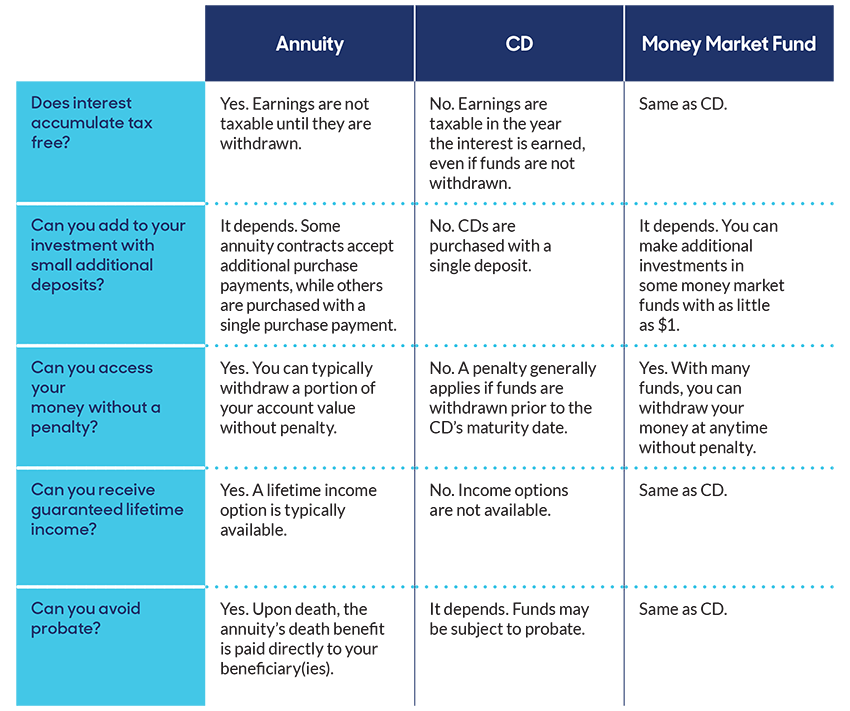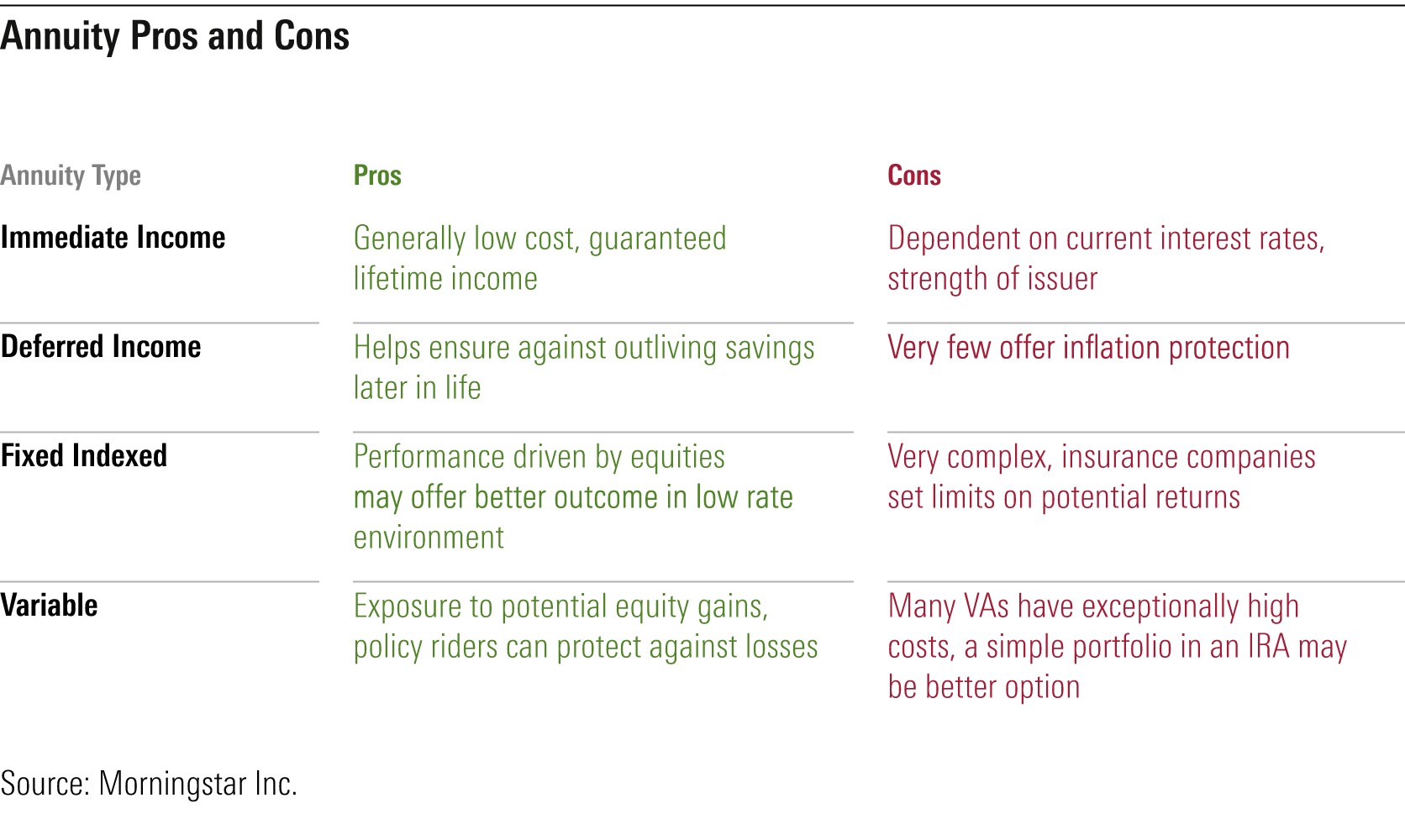All Categories
Featured
Table of Contents
Just the interest part of each payment is considered taxable income. With a deferred annuity, you make normal premium settlements to an insurance firm over a period of time and allow the funds to develop and make passion during the accumulation phase.
A variable annuity is an agreement that supplies rising and fall (variable) rather than fixed returns. The crucial attribute of a variable annuity is that you can manage how your costs are invested by the insurance coverage business.
The majority of variable annuity agreements offer a selection of skillfully handled portfolios called subaccounts (or investment options) that spend in stocks, bonds, and money market tools, as well as well balanced investments. Several of your contributions can be positioned in an account that uses a fixed rate of return. Your premiums will certainly be assigned among the subaccounts that you select.
These subaccounts rise and fall in worth with market conditions, and the principal may be worth essentially than the initial expense when surrendered. Variable annuities give the dual advantages of financial investment flexibility and the possibility for tax deferral. The taxes on all rate of interest, returns, and capital gains are postponed until withdrawals are made.
Analyzing Strategic Retirement Planning Everything You Need to Know About Financial Strategies Breaking Down the Basics of Investment Plans Benefits of Choosing the Right Financial Plan Why Choosing the Right Financial Strategy Is a Smart Choice How to Compare Different Investment Plans: Simplified Key Differences Between Fixed Index Annuity Vs Variable Annuities Understanding the Key Features of Fixed Annuity Or Variable Annuity Who Should Consider Strategic Financial Planning? Tips for Choosing Fixed Annuity Vs Equity-linked Variable Annuity FAQs About Planning Your Financial Future Common Mistakes to Avoid When Choosing a Financial Strategy Financial Planning Simplified: Understanding Your Options A Beginner’s Guide to Smart Investment Decisions A Closer Look at Fixed Income Annuity Vs Variable Growth Annuity
The program, which includes this and other details about the variable annuity agreement and the underlying financial investment choices, can be obtained from your monetary specialist. Make sure to review the syllabus meticulously prior to determining whether to spend. The information in this newsletter is not planned as tax, lawful, investment, or retirement suggestions or recommendations, and it may not be relied upon for the objective of staying clear of any kind of government tax obligation penalties.

The material is stemmed from resources believed to be precise. Neither the information provided nor any point of view expressed makes up a solicitation for the acquisition or sale of any kind of protection. This material was composed and prepared by Broadridge Consultant Solutions. 2025 Broadridge Financial Solutions, Inc.
Two of one of the most usual options consist of repaired and variable annuities. The primary difference between a repaired and a variable annuity is that taken care of annuities have an established rate and aren't connected to market performance, whereas with variable annuities, your eventual payment depends on exactly how your chosen investments carry out. A set annuity offers you a fixed rate of return, which is set by your insurance company.
You can pick just how much money you want to add to the annuity and when you want to start receiving income payments. Typically talking, taken care of annuities are a foreseeable, low-risk means to supplement your revenue stream. You can fund your taken care of annuity with one swelling amount, or a series of repayments.

You can fund a repaired or variable annuity with either a round figure, or in installations over time. A lot of the moment, variable annuities have longer build-up durations than taken care of annuities. The majority of variable annuities are postponed annuities, suggesting your earnings stream does not begin up until years in the future.
Breaking Down Your Investment Choices Everything You Need to Know About Financial Strategies Defining the Right Financial Strategy Benefits of Fixed Income Annuity Vs Variable Growth Annuity Why Fixed Indexed Annuity Vs Market-variable Annuity Matters for Retirement Planning Fixed Index Annuity Vs Variable Annuity: Explained in Detail Key Differences Between Different Financial Strategies Understanding the Risks of Long-Term Investments Who Should Consider Annuity Fixed Vs Variable? Tips for Choosing Fixed Index Annuity Vs Variable Annuities FAQs About Fixed Income Annuity Vs Variable Annuity Common Mistakes to Avoid When Choosing a Financial Strategy Financial Planning Simplified: Understanding Fixed Income Annuity Vs Variable Growth Annuity A Beginner’s Guide to Annuity Fixed Vs Variable A Closer Look at What Is Variable Annuity Vs Fixed Annuity
Both dealt with and variable annuities offer you the possibility to go into the annuitization phase, which is when you get cash from your annuity. With dealt with annuities, you'll get revenue in taken care of installations that are guaranteed to stay the same.
This might be ten years, two decades, or for life. The surrender period is the moment frame during which you can not take out funds from your annuity without paying extra costs. Surrender durations typically put on just delayed annuities so they can use to both taken care of postponed annuities and variable annuities.
Living benefits impact the income you receive while you're still to life. You might want to add an assured minimum buildup value (GMAB) cyclist to a variable annuity to ensure you won't shed cash if your investments underperform. Or, you might want to include a cost of living adjustment (COLA) cyclist to a dealt with annuity to aid your settlement quantity stay on top of rising cost of living.
If you want to begin getting income payments within the next twelve month, a prompt fixed annuity would likely make more sense for you than a variable annuity. You might take into consideration a variable annuity if you have even more of a tolerance for risk, and you would certainly like to be more hands-on with your financial investment choice.
One of these differences is that a variable annuity may provide payout for a life time while common funds might be depleted by withdrawals on the account. Another essential difference is that variable annuities have insurance-related prices and common funds do not. With every one of the significant and small differences in repaired annuities, variable annuities, and shared funds, it is essential to speak with your financial consultant to ensure that you are making smart money decisions.
In a dealt with annuity, the insurance provider guarantees the principal and a minimal interest rate. Simply put, as long as the insurance provider is financially sound, the cash you have actually in a dealt with annuity will expand and will certainly not drop in value. The growth of the annuity's worth and/or the advantages paid might be fixed at a buck amount or by a rates of interest, or they may expand by a defined formula.
Understanding Annuity Fixed Vs Variable A Closer Look at How Retirement Planning Works Defining Fixed Annuity Vs Variable Annuity Pros and Cons of Fixed Annuity Vs Equity-linked Variable Annuity Why Choosing the Right Financial Strategy Is a Smart Choice Fixed Vs Variable Annuity Pros And Cons: How It Works Key Differences Between Different Financial Strategies Understanding the Rewards of What Is Variable Annuity Vs Fixed Annuity Who Should Consider Strategic Financial Planning? Tips for Choosing What Is Variable Annuity Vs Fixed Annuity FAQs About Fixed Vs Variable Annuity Common Mistakes to Avoid When Planning Your Retirement Financial Planning Simplified: Understanding Variable Annuity Vs Fixed Indexed Annuity A Beginner’s Guide to Smart Investment Decisions A Closer Look at How to Build a Retirement Plan
Most variable annuities are structured to provide financiers various fund options. Variable annuities are controlled by state insurance policy divisions and the federal Stocks and Exchange Payment. An equity-indexed annuity is a kind of repaired annuity, yet resembles a crossbreed. It attributes a minimum rate of passion, equally as a fixed annuity does, but its worth is also based upon the efficiency of a specified stock indexusually calculated as a portion of that index's total return.
This withdrawal adaptability is accomplished by readjusting the annuity's value, up or down, to reflect the adjustment in the rate of interest "market" (that is, the general level of rate of interest rates) from the beginning of the chosen amount of time to the moment of withdrawal. All of the following sorts of annuities are readily available in dealt with or variable types.
The payment may be an extremely lengthy time; delayed annuities for retirement can remain in the deferred stage for decades. An immediate annuity is made to pay a revenue one time-period after the prompt annuity is purchased. The time period depends on how typically the income is to be paid.
Decoding Annuity Fixed Vs Variable A Comprehensive Guide to What Is Variable Annuity Vs Fixed Annuity What Is the Best Retirement Option? Benefits of Fixed Annuity Vs Variable Annuity Why Choosing the Right Financial Strategy Matters for Retirement Planning How to Compare Different Investment Plans: How It Works Key Differences Between Variable Vs Fixed Annuity Understanding the Risks of Fixed Vs Variable Annuity Pros Cons Who Should Consider Fixed Income Annuity Vs Variable Annuity? Tips for Choosing Fixed Annuity Vs Equity-linked Variable Annuity FAQs About Fixed Vs Variable Annuity Common Mistakes to Avoid When Planning Your Retirement Financial Planning Simplified: Understanding Your Options A Beginner’s Guide to Annuities Fixed Vs Variable A Closer Look at How to Build a Retirement Plan
A set period annuity pays an earnings for a specific amount of time, such as ten years. The amount that is paid does not depend upon the age (or proceeded life) of the individual who purchases the annuity; the repayments depend instead on the quantity paid into the annuity, the size of the payout duration, and (if it's a set annuity) a rates of interest that the insurer thinks it can sustain for the size of the pay-out period.
A variation of lifetime annuities proceeds earnings until the second either annuitants passes away. Nothing else sort of financial item can guarantee to do this. The quantity that is paid depends upon the age of the annuitant (or ages, if it's a two-life annuity), the quantity paid into the annuity, and (if it's a set annuity) an interest price that the insurance policy business thinks it can support for the length of the anticipated pay-out duration.
Many annuity customers are uneasy at this possibility, so they add a guaranteed periodessentially a fixed duration annuityto their life time annuity. With this mix, if you die before the set period ends, the revenue remains to your beneficiaries up until the end of that period. A competent annuity is one made use of to invest and disburse money in a tax-favored retired life strategy, such as an individual retirement account or Keogh plan or plans controlled by Internal Earnings Code areas, 401(k), 403(b), or 457.
Table of Contents
Latest Posts
Analyzing Strategic Retirement Planning Key Insights on Your Financial Future What Is Fixed Vs Variable Annuity Pros Cons? Pros and Cons of Tax Benefits Of Fixed Vs Variable Annuities Why Variable Ann
Understanding Tax Benefits Of Fixed Vs Variable Annuities Everything You Need to Know About Fixed Index Annuity Vs Variable Annuities Defining the Right Financial Strategy Pros and Cons of Various Fin
Understanding Fixed Annuity Vs Variable Annuity Key Insights on What Is A Variable Annuity Vs A Fixed Annuity Defining the Right Financial Strategy Benefits of Choosing the Right Financial Plan Why Ch
More
Latest Posts